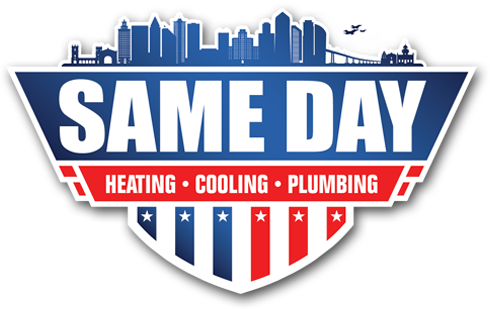AC Repair In San Diego: The Ultimate Guide
Even in San Diego’s mild weather, air conditioners are part of every residence. If you find yourself with a broken unit on the wrong day, you could be in for a long one. Same Day has put together this guide to help inform you of the basics that will help you understand what to do when your air conditioner is causing trouble.
Understanding and Maintaining Your Air Conditioner In San Diego
Before diving into repairs, it’s important to understand how your AC system works. Below are the components and functioning of typical air conditioning systems found in San Diego homes.
The most common types of air conditioning units are split units and packaged units. They can be briefly described by these simple differences:
Split units – these feature two parts – the condenser on the outside of your home and the evaporator coils somewhere in the inside of your home.
Packaged unit – this is a condenser and evaporator coil that have been built together. These are typically placed in the attic of a home.
Heat pumps — heat pumps are becoming increasingly popular as an all-in-one heater and air conditioning package. A heat pump can come in either a split or packaged unit format.
Ductless mini-splits — ductless mini splits are also trending all over the country. They are especially popular in basements or areas where a duct system has not been built into the home. Manufacturers have managed to make them look like more of an affable household decoration than the traditional window unit.
DIY Air Conditioning Repair Tips
Not every problem requires professional help. Discover simple, safe DIY repair tips that you can do at home to fix minor AC issues.
- Regularly clean your air filters and replace them ever few months
- Check and adjust your thermostat settings
- Watch for vegetation or debris around your outdoor unit and clean as necessary.
- Make sure your air vents are clear of any obstructions
Is There A Reset Button On My AC Unit?
When starting DIY projects, you may have a lot of questions about the equipment you are working with, and those questions can lead to more questions. Is there a rest button on my ac unit? Outside or inside? How do I reset my air conditioner? The answers to these types of questions can help your DIY project go smoothly and safely. Luckily, trained professionals at Same Day Heating, Cooling, Plumbing are here to help! We have crafted a guide to some of the most common DIY FAQs, to help you with your next HVAC DIY project.
Cleaning Your Home AC Unit
Cleaning your home air conditioner probably isn’t top of mind for most of us, until we get that reminder email or post card that it’s time for servicing. And while it’s always a good idea to have your air conditioner professionally serviced annually, it’s also doable — and can save you some money — to do some of the cleaning yourself. Most commonly, when people talk about cleaning their air conditioners, they’re referring to the outdoor component of it, called the condenser. Some basic tips:
- Clean away leaves and debris with a rake or shop vac
- Unscrew the fan and wipe the area with a cloth or cleaning solution
- Spray the fins with a mild pressure washer or hose
- Re-install the fan after done
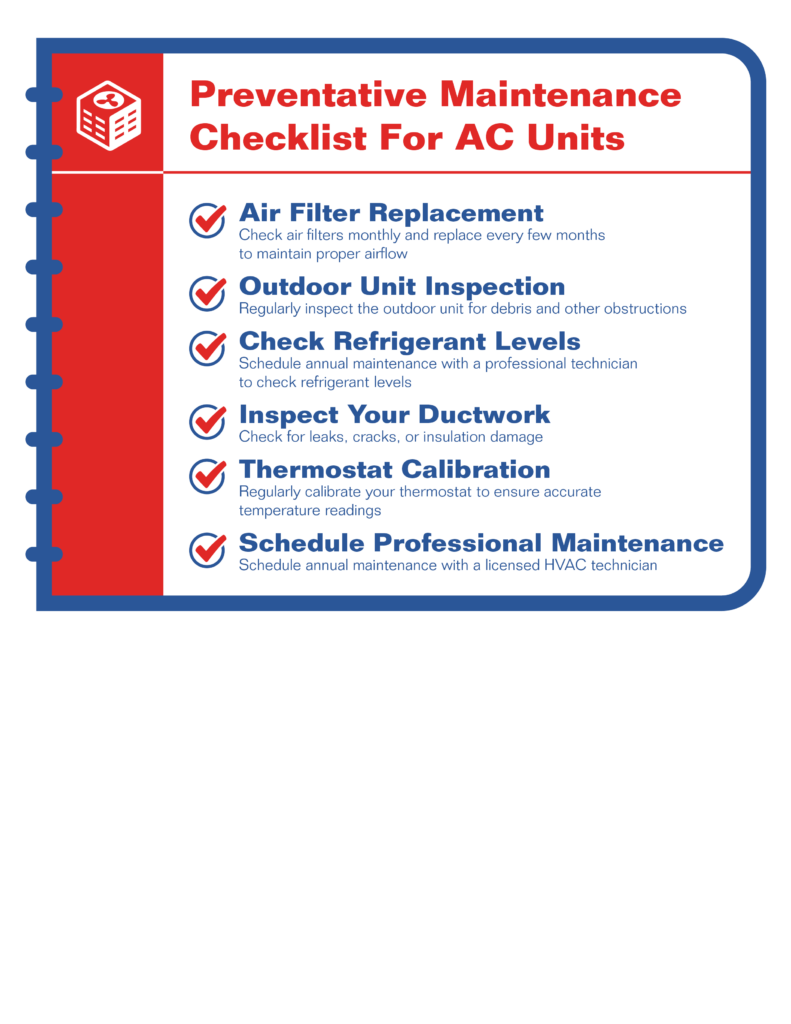
Preventative Maintenance: Being Proactive With Your AC Unit
The best way to combat the pitfalls of doing business with an HVAC company is to be prepared. Preparing for regular maintenance and scheduling repairs in advance can help you save time and money in the long run. Homeowners who know their air conditioner or furnace may not last the upcoming season might start thinking about replacement now so they can get the system they want in the timeframe that they need it.
Prevention is better than cure. Learn about regular maintenance practices that can help you avoid frequent repairs and extend the life of your AC unit.
Air Filter Replacement – Why It’s Crucial
You can usually set basic reminders on when to change your air filter. Dirty air filters are often the biggest contributor to HVAC system failure. They can cause both your heater and air conditioner to work overtime to compensate for proper airflow, which will generally be noticeable in a higher utility bill every month.
Dirty air filters can also exacerbate existing respiratory problems like asthma and allergies. Because the air filter traps and collects dust, pollen, debris, and even mold, if it’s been a long time since you’ve changed the filter, all those contaminants can circulate through your home like the greatest hits of irritating allergens. Dirty air filters in dry climates and homes with pets especially affect home indoor air quality.
Seasonal AC Maintenance Tips
Seasonal maintenance can be crucial in a city like San Diego. Your HVAC system is responsible for keeping your home comfortable all year round. If that weren’t important enough to consider, it’s also one of the bigger household expenses you’ll pay for, not only monthly in the form of utility bills, but also larger expenses in the form of repairs or replacement for HVAC components.
A little DIY home HVAC maintenance can go a long way to helping prolong the life of your most expensive HVAC systems (central air, for example). In addition, paying attention to the HVAC periodically can help it run more efficiently, saving you money and time. This includes:
- Establishing a home HVAC maintenance checklist
- Making sure your air filters are clean
- Checking your home’s air vents and registers
- Clearing away debris and making sure your outside condenser is cleaned
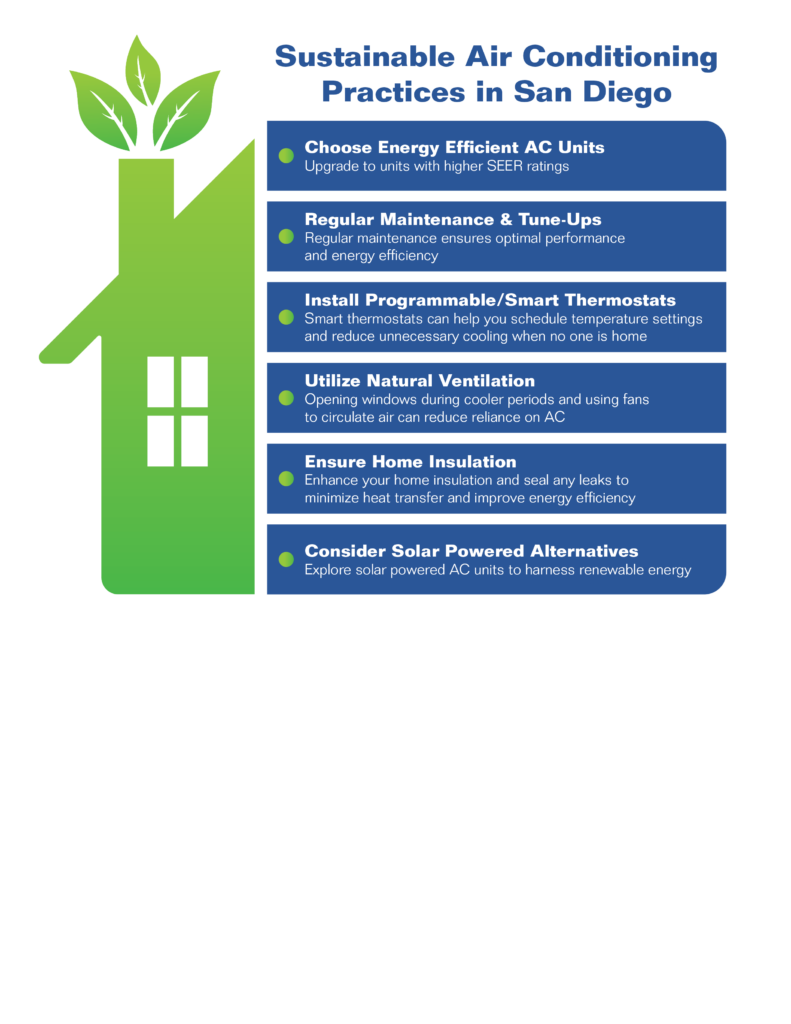
Sustainable Air Conditioning Practices in San Diego
There are eco-friendly practices in air conditioning that are particularly relevant to the San Diego area. It is essential given the region’s climate to try to work these into your lifestyle.
1. Choose Energy Efficient AC Units
Upgrading to energy-efficient air conditioning units is one of the most effective ways to practice sustainability. Modern air conditioners with higher Seasonal Energy Efficiency Ratios (SEER) consume less energy for the same cooling output. The U.S. Department of Energy recommends units with a SEER rating of at least 15 for optimal efficiency. This not only reduces carbon emissions but also cuts down on electricity bills.
2. Perform Regular Maintenance and Tune-Ups
Regular maintenance of air conditioning systems is crucial. This includes cleaning or replacing filters, checking for refrigerant leaks, and ensuring the system is running at its optimal capacity. Properly maintained systems use less energy and have a longer lifespan, reducing the need for frequent replacements and the associated environmental impact.
3. Install Programmable Thermostats
Installing programmable or smart thermostats can lead to significant energy savings. These devices allow residents to set temperature schedules, ensuring the air conditioning is not running unnecessarily, especially when no one is home. Some smart thermostats can even learn a household’s patterns and adjust temperatures accordingly for maximum efficiency.
4. Utilize Natural Ventilation
Whenever the weather permits, utilizing natural ventilation can be a sustainable alternative to air conditioning. Opening windows during cooler times of the day and using fans can help circulate air and maintain a comfortable indoor environment. This practice reduces reliance on air conditioning and the associated energy consumption.
5. Ensure Home Insulation and Sealing
Enhancing home insulation and sealing any leaks can significantly reduce the need for air conditioning. Proper insulation in walls, roofs, and around windows can keep the indoor environment cooler in the summer and reduce the load on air conditioning systems. Weather stripping and caulking can prevent cool air from escaping, making the system more efficient
6. Consider Solar-Powered AC Units
For those looking to take sustainability a step further, solar-powered air conditioning units are an emerging option. San Diego’s sunny climate makes it an ideal location for solar power. While the initial investment may be higher, solar-powered units can offer long-term savings and a smaller carbon footprint.
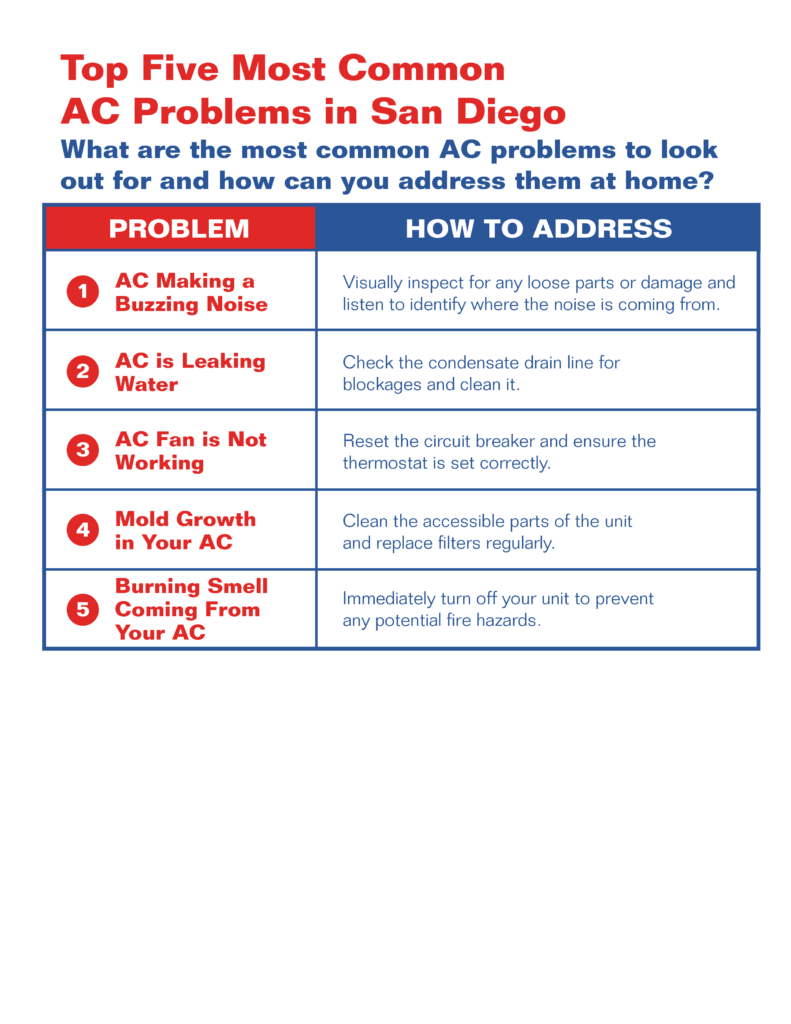
Recognizing and Addressing Air Conditioning Problems
The Top Five Most Common Air Conditioning Problems in San Diego
San Diego homes face a variety of issues, but Same Day often takes calls for refrigerant leaks and low refrigerant levels, clogged or dirty air filters that affect air flow, faulty thermostats, compressor and condenser unit issues, wiring and electrical problems and poor maintenance leading to reduced performance. Here are the top five issues.
1. AC Is Making A Buzzing Noise
Potential Issue: A buzzing noise from an air conditioner often indicates electrical problems, such as loose wiring, a malfunctioning compressor, or issues with the fan motor or blades.
Homeowner Action: Visually inspect for any obvious loose parts or damage. Listen to identify if the buzzing is coming from the outside unit (compressor) or inside (fan).
DIY or Professional: Electrical issues should be handled by professionals due to safety risks. While a homeowner can perform a basic visual check, it’s recommended to call a professional if the buzzing noise persists or if there’s any uncertainty about the source.
2. Air Conditioner is Leaking Water
Potential Issue: Water leaking from an air conditioner often indicates a clogged drain line or a malfunctioning condensate pump.
Homeowner Action: Check the condensate drain line for blockages and clean it. Inspect the condensate pump for proper function.
DIY or Professional: This can generally be a DIY task. If cleaning the drain doesn’t resolve the issue, it’s advisable to call a professional.
3. Air Conditioner Fan is Not Working
Potential Issue: A non-functional AC fan could be due to a tripped circuit breaker, faulty motor, or a problem with the thermostat.
Homeowner Action: Reset the circuit breaker and ensure the thermostat is set correctly. Check for any visible signs of damage.
DIY or Professional: Resetting the breaker or thermostat can be done DIY. However, if the issue persists, professional assessment is recommended.
4. There is Mold In My Air Conditioner
Potential Issue: Mold growth in AC units is typically due to excess moisture and inadequate maintenance.
Homeowner Action: Clean the accessible parts of the unit and replace filters regularly. Ensure proper airflow and humidity control.
DIY or Professional: Minor cleaning can be DIY. For extensive mold, especially in ductwork, professional cleaning is advised to ensure health safety.
5. A Burning Smell Is Coming From My AC
Potential Issue: A burning smell from an AC unit can indicate an electrical issue or a burnt-out motor.
Homeowner Action: Immediately turn off the unit to prevent potential fire hazards.
DIY or Professional: This is a situation for a professional. Do not attempt DIY repairs as electrical issues can be dangerous.
What Are Some Common Signs My Home AC Needs Repair?
Some of the things to watch for aside from obvious signs such as your house being cooled insufficiently include strange noises such as rattling or squealing, bad odor from your vents, high humidity levels (look at your windows!), frequent cycling on and off, and a major jump in energy bills without a change in usage.
1. You Have A Dirty or Clogged Air Filter
Dirty air filters are often the biggest contributor to HVAC system failure. They can cause both your heater and air conditioner to work overtime to compensate for proper airflow, which will generally be noticeable in a higher utility bill every month. This can also manifest in short cycling, which is what happens when your air conditioner or heater has to increase the timing between its cycles to keep up with the air temperature. Causing problems all year long, dirty filters also often lead to early burnout for your furnace, air conditioner, or both.
Recommendation: DIY Fix. Air filters are easy to purchase and replace
2. You Have A Thermostat Issue
Your thermostat is used to automatically adjust the temperature in your house based on what the current temperature in your home is. If you have a deficient thermostat, it may not be able to properly read the room, and not tell your thermostat when to kick on. Essentially, a broken-down ac system could be the result of a defective thermostat. Be sure to check the batteries in your thermostat to see if that is the problem.
Recommendation: DIY Fix (unless it’s a wiring or more highly technical thermostat issue)
3. Your AC Is Leaking Refrigerant (Freon)
AC leaking freon (or running out of it) is a major issue. This issue causes reduced cooling efficiency. It can sometimes be accompanied by a bubbling noise, which indicates a leak. Not only is the system performance a problem, but it can also cause environmental harm as well due to freon’s hazardous nature.
Recommendation: Call A Professional
4. You Have A Clogged Drain Line
Your AC unit pulls humidity from the air and produces water. This water typically drains away in your drain lines. Over time, water can get caught up in this drain line and back up. Algae, mold or debris can block the flow of the drain line. If you see water leaking around your unit, or smell a musty odor, it’s a sign your drain line needs cleared out.
Recommendation: Call A Professional
5. Your AC Has Faulty Wiring
Any air conditioner needs a power source. If your circuit breaker is tripping frequently in conjunction with your AC turning off, this could be a sign of faulty wiring. Other signs could be short-cycling, buzzing or clicking from the unit.
Recommendation: Call A Professional
6. Your AC Coils Are Dirty, Corroded or Frozen
The two main causes of frozen AC coils are clogged air filters/lack of air flow, and refrigerant leaks. First, clogged or dirty air ducts can cause your air conditioning system to run improperly. The disrupted air flow doesn’t allow your system to keep coils warm, allowing moisture in the system to settle on the coils and freeze. As for refrigerant leaks, this issue can cause frozen coils in several different ways. For one, a refrigerant leak may cause the pressure in your system to drop, telling the refrigerant to expand and freeze. Another way is through the refrigerant itself which can accumulate in the AC unit and freeze if not properly drained.
Recommendation: Call A Professional
7. Your AC Contactors Are Worn Out
The contactor plays a major role in stating and stopping your AC unit by controlling the electricity to other parts of the system such as the compressor and motor. Over time, they can wear out, which impedes the flow of electricity. This can lead to failed operation. Depending on your unit, a failed or pitted contactor can be seen upon inspection. This requires immediate attention — particularly if the rest of your unit is in good shape. The reason for this is that a failed contactor can damage other parts of your AC unit.
Recommendation: Call A Professional
8. You Have Dual Zone AC Problems
On the surface, dual zone AC systems seem like a great solution for larger homes and residences that need to regulate temperature differently in different rooms, or by area of the house. And that’s precisely what dual zone air conditioning systems allow you to do, often while increasing the overall efficiency of your HVAC system.
So if you’re looking to upgrade your existing HVAC, adding dual zone air conditioning to your home can provide improved flexibility and efficiency. Like any HVAC solution, however, dual zone air conditioning problems are likely to come up once installation is complete and you begin to understand exactly how it will function in your home.
Recommendation: Try DIY First, Then Call A Professional
When to Call a Professional for AC Repair in San Diego
Sometimes, a professional touch is needed. Learn how to recognize the signs that indicate it’s time to call in the experts for your air conditioning repair.
Can I Wait Until Winter In San Diego To Get My AC Repaired?
Same Day recommends you schedule a call immediately. You could be losing money on your energy bills and living with poor air quality for the entire summer month. Discomfort for you or your family could cause other stressful issues. You also may be risking the total lifespan of your system, with a worse-case scenario being a major system failure.
Handling Emergency AC Repairs in San Diego
In spite of preventative measures, emergencies can happen. Same Day offers 24/7 emergency AC repair. But threre is responsibility with the homeowner to create a response plan for a failing air conditioner system, or you might find yourself and your family camping out at a relatives house or hotel room on a hot summer evening.
A quick overview:
Understand the urgency: if you have vulnerable individuals like children, elderly, or those with medical conditions, you should have an emergency contact on the ready to make sure they can stay safe. This is typically a family, a friend, or a neighbor. In worse case scenarios, you may have to pay for a hotel room. Likewise, keep an extra case of water in stock to stay hydrated. If you don’t have any, make sure part of your response plan is purchasing one.
Have fans on the ready: Staying cool is important in an emergency situation. Having fans, staying in your basement, using dehumidifiers are all ways to keep away from the hottest parts of the house, which are usually upstairs.
Invest in a backup cooling system: This could include a portable unit or window AC unit that can, at the very least, take care of a room or one floor of your home during emergencies.
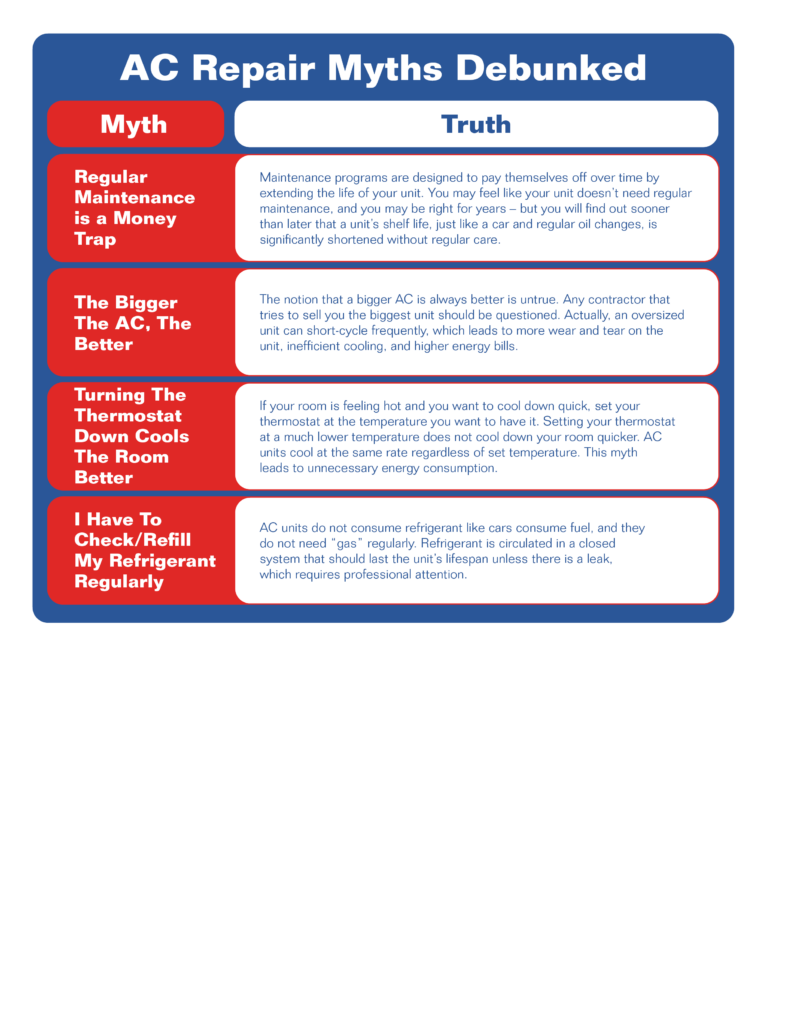
Air Conditioning Repair Myths Debunked
There are many myths about AC repairs. This section aims to debunk common misconceptions and provide factual information.
- It’s A Small Issue – Do not mistake DIY solutions for ones that need professional help. Additionally, small, DIY problems you are able to fix may be indicators of larger issues. Do not try to DIY repair issues on your AC from YouTube videos. It can lead to further damage of your unit.
- Regular Maintenance Is A Money Trap – Maintenance programs are designed to pay themselves off over time by extending the life of your unit. You may feel like your unit doesn’t need regular maintenance, and you may be right for years — but you will find out sooner than later that a unit’s shelf life, just like a car and regular oil changes, is significantly shortened without regular care.
- The Bigger The AC, The Better – The notion that a bigger AC is always better is untrue. Any contractor that tries to sell you the biggest unit should be questioned. Actually, an oversized unit can short-cycle frequently, which leads to more wear and tear on the unit, inefficient cooling, and higher energy bills.
- Turning The Thermostat Down Cools The Room Better – If your room is feeling hot and you want to cool down quick, set your thermostat at the temperature you want to have it. Setting your thermostat at a much lower temperature does not cool down your room quicker. AC units cool at the same rate regardless of set temperature. This myth leads to unnecessary energy consumption.
- I Have To Check/Refill My Refrigerant Regularly – AC units do not consume refrigerant like cars consume fuel, and they do not need “gas” regularly. Refrigerant is circulated in a closed system that should last the unit’s lifespan unless there is a leak, which requires professional attention.
Navigating The Cost of Air Conditioner Operations and Repair In San Diego
After nearly a year and a half of the global COVID-19 pandemic, we have seen society slowly shift towards a new sense of normalcy, both socially and in the business world. The structure of a new post-COVID business environment has forced businesses to adapt and change the way in which they operate.
How COVID-19 Impacted the HVAC Industry
You may be wondering why costs are rising for HVAC service, parts, and repairs. The demand for HVAC parts, new units, and repairs tend to spike when the weather heats up and our industry is accustomed to receiving price increases from manufacturers yearly. But this year, the COVID-19 pandemic is creating a perfect storm that is making parts and equipment more expensive than usual with quarterly price increases.
Across the board we are seeing manufacturers raise the price of equipment, parts and supplies that are causing consumer prices to soar at an average of 3%-9%. Labor shortages, the lack of availability of raw materials and increased transportation costs are the main factors contributing to inflated prices across the HVAC sector.
Labor Shortages
The reduced size of the U.S. workforce has had a dramatic effect on the HVAC sector of the home-service industry. The added ability to work from home combined with insufficient wages has led to a decreased labor force that impacts manufacturing and installment of HVAC units. HVAC companies are offering higher wages and bonuses to counteract the shortage of skilled workers which is playing a role in increased prices for the consumer.
Availability of Raw Materials
An additional factor impacting HVAC supply chains is the increased price, or lack of availability of commodities and raw materials. This lack of supply leads to shipping delays. In an effort to mitigate these delays prices must rise accordingly. High demand and low supply of materials used in the HVAC process leads to higher prices for the consumer. These materials include steel mill products, lumber, copper, and aluminum.
Increased Transportation Costs
The cost of both diesel and gas has been rising dramatically in the last few months which has impacted shipping and transportation costs. Increased shipping costs makes materials and parts more expensive, while increased fuel prices make it much more costly for HVAC technicians to perform service. Some HVAC companies are even beginning to reduce their service areas because fuel costs are so inflated.
Energy Efficiency and Your Air Conditioner
A common confusion/misconception is that central AC runs on gas, but that’s a mix up. Most heating systems use gas or fuel oil to heat your home, whereas air conditioning units run on electricity, but use cooling refrigerant chemicals to output cool and comfortable air. Typically, central air conditioning units have their own dedicated plug that they draw power from.
How Much Electricity Does My Central AC Unit Use?
Efficiency is key to both environmental sustainability and reducing electricity bills. It’s easy to tell if a home or location has central air or not. Air conditioning is driven by a fan outdoors, typically around the back half of the building, which blows air into your house, through a system installed in the basement or a closet, and then sends cool air out through ducts built into the structure of the building.
Older structures do not have ducts, so these buildings are kept to temperature through open windows, fans, and window-mounted units. Retrofitting an old building with a modern air conditioning system can be costly upfront, but beneficial to the comfort of the homeowner.
Innovative Air Conditioning Technologies That Could Save You Money
The HVAC industry has seen significant advancements in energy efficiency, smart technology, and environmentally friendly solutions.
1. Smart Thermostats
Modern AC units incorporate and are integrated with the Internet of Things (IoT). This provides convenience and energy efficiency by allowing homeowners to monitor and change their settings by a remote control or smartphone device.
2. Solar Air Conditioning
Solar energy has gained traction recently. It can significantly lower your energy bills, reduce your total energy output, and is more environmentally friendly.
3. Variable Refrigerant Flow (VRF) Systems
VRF systems allow for the control of the amount of refrigerant flowing to multiple indoor units. They have become more common in residential settings for their ability to offer high efficiency and the ability to produce different temperatures in different rooms.
4. Inverter Technology
Inverter air conditioning units adjust the speed of the compressor motor to control refrigerant flow, which regulates indoor temperatures more effectively. This is more cost-effective than a traditional on/off system.
How Can I Save Air Conditioning Energy To Decrease My Bills?
Saving money on your air conditioner is also easier than you might think, and there are a few very effective and low-maintenance techniques and tips you can use to reduce your costs. These fall into categories related to how you use your AC, and how well your home is outfitted for energy and air conditioner efficiency.
Some of the ways you can save on energy include:
- Cooking outside in the summer
- Opening windows at night and turning on fans
- Closing windows, blinds and drapes
- Taking cooler and shorter showers
Warranty and Insurance for AC Repair in San Diego
Warranties and insurance are part of having a central AC unit. Understanding them can help save you time and money by knowing what is typically covered, what is not, and who to get in touch with should you need them.
Most home warranty policies are designed to cover major home systems and appliances — things that have a big impact on your home’s comfort and that can be expensive to repair or replace. Each policy is different, but the list generally includes:
- Major home appliances such as refrigerators, stoves, garbage disposals, and washing machines
- HVAC systems
- Ducting
- Water heaters
- Garage door components
- Electrical systems
- Plumbing
The Impact of San Diego’s Climate on Air Conditioning Systems
San Diego’s unique climate can have specific impacts on AC units. A lot of people ask, do you even need an AC unit in San Diego? Spoiler alert: yes, you do.
You may be wondering what some of your neighbors might have in their home if you do decide to live in San Diego. The truth is most homes do not have air conditioning in the area. In 2018 it was reported that only 10.8 percent of homes sold over that year in San Diego had air conditioning. Compare that to 54.7 percent of homes nationwide, and over 99 percent of homes in hot climates such as Phoenix and Las Vegas. Most people get away with not having AC living here in San Diego.
Is AC Really Needed in San Diego?
So, do you need air conditioning in San Diego? We would recommend that all homes have an air conditioner, especially for those summer months of July, August, and September. While the temperature may be comfortable most times of the year, it is best to have an AC for those times when it becomes unbearable. The good news is you likely will not have to use it all year long like some other cities throughout California might have to. Overall, air conditioning might not be necessary for you, but we recommend that all homes have it for those really hot times of year.
Heat Wave Preparation
Indoor Air Quality & Local Regulations
Indoor Air Quality and Your Air Conditioner
Your AC doesn’t just cool your home; it affects air quality too. Recognizing when to change your air filter is a big part of indoor air quality — but it’s not the only thing.
1. Pollen Allergens
The mild temperature and low humidity climate of San Diego makes it primed for pollen allergies throughout the year. Pollen from all different types of sources can find its way into your home, so it is smart to have an air purification system.
2. Wildfire Smoke
Especially in California, wildfires have become a common occurrence. These massive fires release smoke and harmful pollutants into the air. This can affect you even if you live hundreds of miles away as it travels through the air. During these types of events, it is very important to keep your windows and doors closed throughout the day.
3. Mold and Moisture
Plumbing problems and leaky roofs can cause moisture to make its way into your vents, creating mold, and leaving you with an IAQ problem in your home. This can cause a wide range of issues from allergies to even respiratory infections in some cases.
4. Pet Dander and Dust
Like many homes, our furry friends are part of our family. But they can leave behind dander and fur that cause allergies and exacerbate respiratory conditions. It is important to frequently vacuum and clean after your pets.
5. Poor Ventilation
Insufficient ventilation, while great for energy consumption, can be an issue when it comes to IAQ. Reused indoor air can be filled with pollutants and allergens.
Navigating California & San Diego’s AC Repair Regulations and Standards
San Diego has specific regulations and standards for AC repairs. Familiarize yourself with these to ensure compliance and safety.
1. Federal Minimum Energy Efficiency Requirements
As of 2023, all new central air conditioners and air-source heat pumps installed in California must have an efficiency rating of at least 15 SEER (14.3 SEER2) for air conditioners and 8.8 HSPF (7.5 HSPF) for heat pumps. This is a federal requirement that supersedes state law. Note that these increased energy efficiency requirements only apply to newly installed units. Source: CARB
2. California Title 24 AC Efficiency Standards
Title 24 aims to improve energy efficiency in both commercial and residential buildings in California. It includes standards for proper sizing of heating or cooling equipment, reduction or elimination of air leakage into unconditioned spaces, and energy-efficient control systems. Title 24 also mandates duct installation standards, HVAC sizing, and thermostats. Source: Energy.Gov
3. Regulations on AC Equipment from the CARB
The California Air Resources Board (CARB) regulates air-conditioning equipment, including prohibitions on the use of certain hydrofluorocarbons in stationary refrigeration and air-conditioning. New AC and Variable Refrigerant Flow (VRF) equipment used for both residential and non-residential purposes must use refrigerants with a Global Warming Potential (GWP) less than 750. The effective dates for these prohibitions vary depending on the specific AC equipment category. Source: Energy.Gov
4. Repairs and Servicing Impacts of Regulations
For air conditioning systems, there are specific regulations concerning the replacement of components. For instance, it’s permissible to repair components of an indoor coil system, but completely replacing that indoor unit is restricted. This is in line with efforts to maintain the integrity of the system and adhere to environmental standards. The use of certain refrigerants, like R-410A and R-22, is also a subject of regulatory discussion, particularly concerning servicing existing equipment. Source: hcd.ca.gov
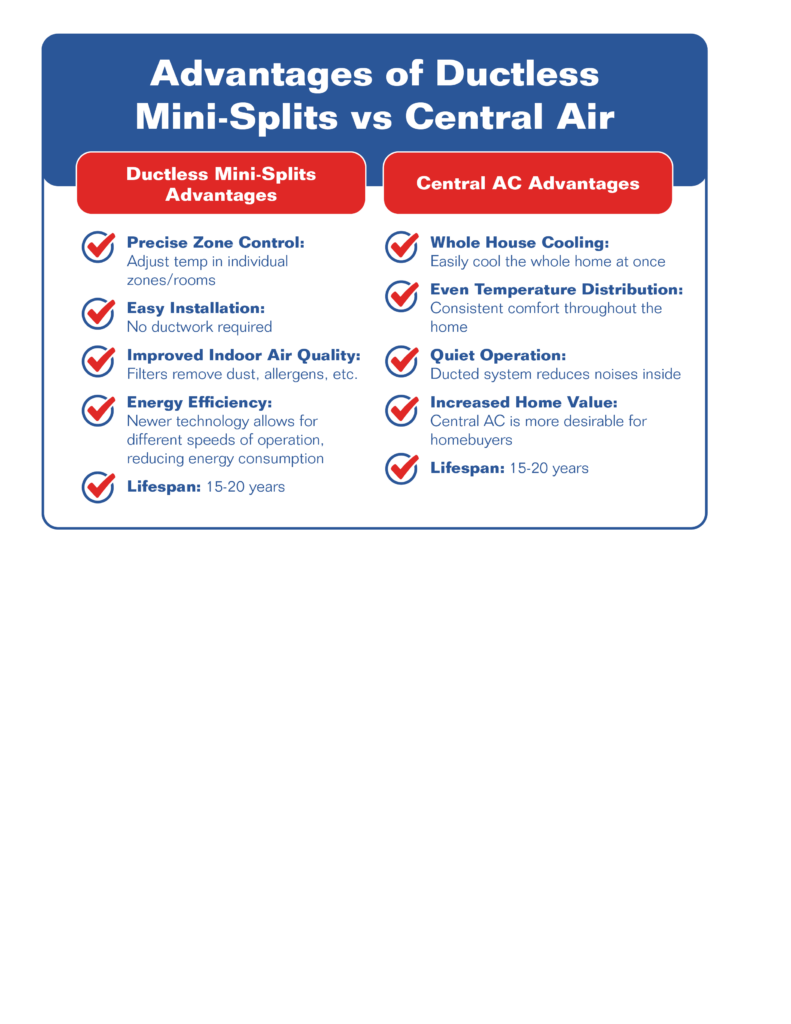
About Ductless Mini-Split AC Systems
A ductless mini-split is a type of heating and cooling system that allows you to change the temperature of different areas in your home independent from the other. Rather than using ducts to heat and cool the home, this system consists of an outdoor unit and one or more indoor units connected by refrigerant lines.
How A Mini-Split AC System Works
As summer approaches with more people likely at home during the hot weather, it might be no surprise that the demand for home air conditioning is high. Whether you need to cool a large home or a smaller space, the type of cooling system that will work best depends on a variety of factors that account for both your preferences, and your environment.
One of the more flexible options are ductless mini-split air conditioning systems, also called ductless air conditioning systems. We’ll look at how they work, why they make an appealing choice, and compare them against other air conditioning options.
Like central air conditioning, mini-split air conditioning has the same basic components — an outdoor compressor and an indoor air-handling unit. The difference is that with a central air system, the cool air is distributed through the house through a series of ducts. With a mini split, the unit is mounted to the wall in the room and requires no ductwork. The air handler portion of the system forces warm air across refrigerant lines, cooling the air, and then passing it directly into the room where it is mounted.
What Are Some Some Advantages of Ductless Mini-Splits?
There are many great advantages to ductless mini-split systems when comparing them to traditional systems. Some of these benefits include:
- Precise zone control, allowing you to adjust the temperature in individual rooms or zones according to specific comfort preferences.
- High energy efficiency
- Easy to install
- Improved indoor air quality
What is The Lifespan of A Ductless Mini-Split?
While the lifespan of a ductless mini-split can depend on a variety of different factors including upkeep, proper installation, usage, and more, a typical system will last between 15-20 years. Similar to traditional systems, it might be advantageous to replace your system as it gets older.
What does the future hold for air conditioning in San Diego? Delve into emerging trends and predictions.
Cleaning Your Ductless Mini-Split
Do you have a wall-mounted AC unit in your home? No matter what kind of AC system you have, it is important to keep your system clean and free of any obstructions. Doing so will help improve indoor air quality and keep you breathing easy around your home! You may be wondering, however, what you need and how you should clean your air conditioner wall unit. That’s where we come in!
To begin cleaning your wall AC unit, you will first need to know what materials you should use. Make sure you have the following list of items handy when you go in to clean your unit.
- All-Purpose Cleaning Spray
- Coil Cleaner
- Water
- A Cloth
- Shop Vac with Hose
- A Soft Brush
With these in hand, you will be ready to take the first step toward cleaning your wall unit air conditioner. So, what does that process look like? We have laid it out for you below, and it is not as arduous as it may seem.
Deciding Between Ductless Air Conditioning and Central Air
There are many factors that contribute to how much you can expect to spend on cooling with ductless versus central air conditioning system. But in general, you can expect central air to be a bigger investment.
But a bigger investment can also mean a bigger payoff. So the question that many homeowners will likely come across in their search for an air conditioning replacement is relative to a variety of factors — geography, home location and layout, budget and climate.
Whether you’re looking to add air conditioning to a residence or rental, or it’s time to repair or replace an existing system, getting to know the options — and the important differences — for home air conditioning can help you make the best decision for your home and your HVAC needs.
